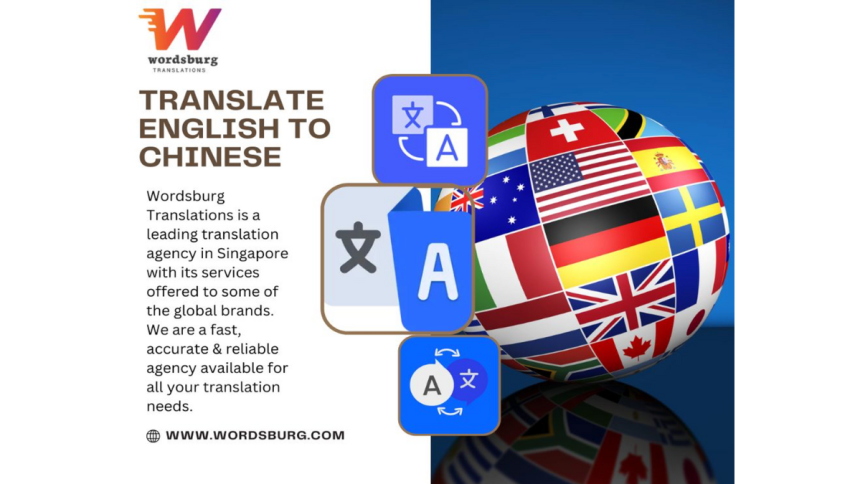In our increasingly interconnected world, effective communication across languages is not just a convenience but a necessity. Among the many important language pairs, Translate English To Chinese stands out due to the global influence and economic significance of these two languages. This process of translation not only facilitates practical communication but also plays a crucial role in cultural exchange, academic discourse, business interactions, and much more.
Importance of English to Chinese Translation
Global Business and Trade: English and Chinese are dominant languages in international commerce. Translating business documents, contracts, and negotiations accurately between these languages ensures clarity and compliance, facilitating smooth transactions and partnerships.
Cultural Exchange
Literature, films, academic texts, and other cultural artifacts are often translated between English and Chinese, enabling cross-cultural appreciation and understanding. This exchange promotes diversity and enriches global cultural dialogue.
Education and Research
English and Chinese are pivotal in education and research. Translating academic papers, textbooks, and research findings allows scholars and students from different linguistic backgrounds to access and contribute to global knowledge.
Tourism and Hospitality
Translation services are essential for tourists visiting China or English-speaking countries, enhancing their travel experiences by enabling effective communication and cultural immersion.
Challenges in Translation
Linguistic Differences: English and Chinese belong to different language families—Indo-European and Sino-Tibetan respectively. These linguistic disparities lead to structural, grammatical, and lexical differences that require careful handling during translation to ensure accuracy and natural flow.
Cultural Nuances
Each language carries unique cultural connotations, idiomatic expressions, and historical references that may not have direct equivalents in the other language. Translators must navigate these nuances adeptly to convey the intended meaning and context accurately.
Technical and Specialized Content
Translating technical, legal, medical, or scientific content requires expertise in both languages and familiarity with specialized terminology. Precision is paramount to ensure the accuracy and reliability of translated materials.
Contextual Understanding
Context plays a crucial role in translation. The meaning of a word or phrase can vary significantly depending on the cultural, historical, or situational context. Translators must grasp the broader context to provide accurate and meaningful translations.
Strategies for Effective Translation
Transliteration vs. Translation
Depending on the content and context, translators may choose between transliteration phonetic conversion and translation semantic conversion. Transliteration preserves the original sound and cultural identity, while translation focuses on conveying the meaning accurately.
Utilization of Translation Tools
Translation software and applications assist translators by providing immediate translations and enhancing productivity. While these tools are valuable for basic translations, human oversight is essential for handling complex nuances and ensuring cultural sensitivity.
Cultural Sensitivity
Understanding cultural norms, values, and sensitivities is crucial for producing culturally appropriate translations. A nuanced understanding allows translators to convey messages respectfully and effectively across cultural boundaries.
Collaboration and Review
Peer review and collaboration among translators and subject matter experts improve the quality and accuracy of translations. Feedback and multiple perspectives help mitigate errors and ensure that the final product meets high standards of linguistic and cultural authenticity.
Future Trends in Translation
Advancements in Machine Learning and AI
Artificial intelligence and machine learning are revolutionizing the field of translation. These technologies enable faster, more accurate translations by analyzing vast amounts of linguistic data and improving translation algorithms continuously.
Localization
Beyond translation, localization adapts content to specific cultural and linguistic contexts. This process involves modifying language, design, and content to resonate with local audiences, ensuring relevance and engagement.
Interdisciplinary Approach
Translation increasingly intersects with disciplines such as computational linguistics, psychology, and cultural studies. This interdisciplinary approach enriches translation methodologies and enhances our understanding of language and communication.
Ethical Considerations
As translation technology advances, ethical concerns emerge regarding data privacy, bias in AI algorithms, and the impact of automation on employment in the translation industry. Addressing these ethical considerations is crucial for ensuring fair and responsible use of translation technologies.
Conclusion
The translation of English to Chinese—and vice versa—is a complex and multifaceted process that goes beyond mere linguistic conversion. It serves as a bridge connecting people, cultures, and ideas across geographical and linguistic boundaries. By facilitating effective communication and fostering mutual understanding, translators play a pivotal role in promoting global harmony and cooperation. As technology continues to evolve and globalization progresses, the role of translation in our interconnected world becomes increasingly indispensable. Embracing innovation while upholding linguistic accuracy, cultural sensitivity, and ethical standards will ensure that translation remains a powerful tool for promoting cross-cultural dialogue and building a more inclusive global community. This expanded content provides a comprehensive exploration of the significance, challenges, strategies, future trends, and ethical considerations related to translating from English to Chinese, emphasizing its profound impact on global communication and cultural exchange.
Lynn Martelli is an editor at Readability. She received her MFA in Creative Writing from Antioch University and has worked as an editor for over 10 years. Lynn has edited a wide variety of books, including fiction, non-fiction, memoirs, and more. In her free time, Lynn enjoys reading, writing, and spending time with her family and friends.















